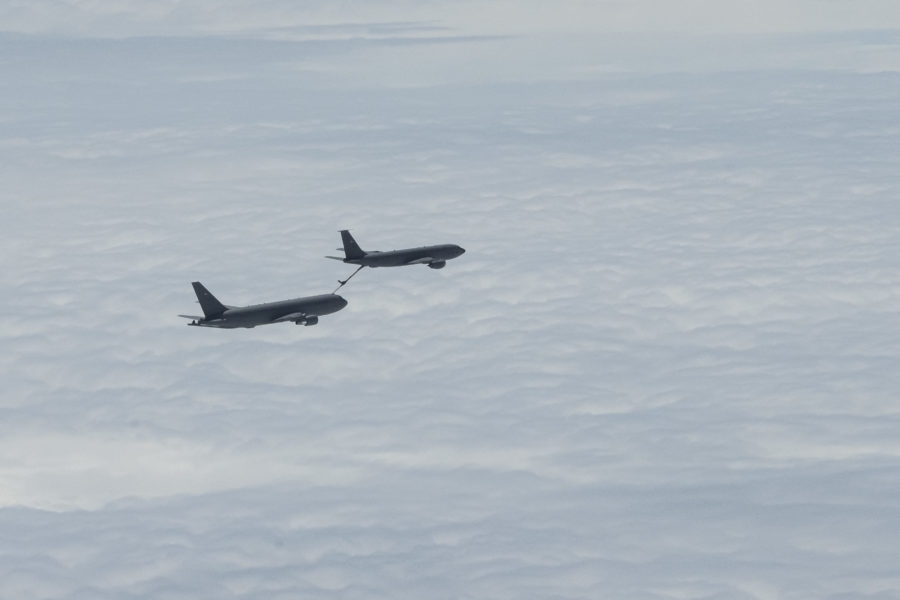Skeptical of the Air Force’s future tanker plans, members of the House Armed Services seapower and projection forces subcommittee are one step closer to gaining added oversight, but there’s a long road ahead.
The full HASC meets June 23 to vote on amendments and their version of the National Defense Authorization bill, after which the measure must also clear the full House, the Senate, and a conference process to resolve differences between the House and Senate versions. But the subcommittee markup is a key first step, and such provisions often survive in final legislation.
Four provisions address the Air Force’s tanker fleet and the KC-46, KC-135, the so-called “bridge tanker” to replace the KC-135s, and the new Next-Generation Air Refueling System (NGAS). The Air Force shook up its tanker plans earlier this year, introducing the new NGAS concept in January, promising an analysis of alternatives in the fall, years earlier than previously planned. USAF officials have said they want to field NGAS aircraft just over a decade from now.
That plan de-emphasized a “KC-Y” interim tanker to bridge the gap between the KC-46 and NGAS, reducing to 75 tankers the number of tankers USAF would buy. Air Force Secretary Frank Kendall also indicated less interest in a new program, rather than simply adding more KC-46s.
But some lawmakers have pushed back, frustrated with KC-46 maker Boeing’s performance on that tanker contract. They want a new competition, and Lockheed Martin and Airbus have teamed up on an alternative called LMXT.
A similar effort failed last year, but this time lawmakers took a different approach. In one provision, lawmakers voted to prohibit the Air Force from issuing an acquisition strategy for the bridge tanker until it submits a business case analysis and “validated requirements from the Joint Staff for the contract competition.”
Also in the provision is a requirement for a business case analysis and analysis of alternatives for NGAS “based on a more realistic timeline.” Some legislators appear skeptical that NGAS will be ready by the mid-2030s—and a delay would presumably expand the needs of the bridge tanker program. Lockheed officials have argued the 2035 timeframe is “a very, very aggressive target.”
A second provision in the markup would prohibit the Air Force from buying more than 179 KC-46s unless its top acquisition executive provides “validated needs of the Air Force” and cost estimates for sustaining additional KC-46s.
None of these efforts would affect current plans for the KC-46 fleet, which has held fast at 179 aircraft, but rather on any effort to expand KC-46 purchases.
The third tanker provision touches on the KC-46’s planned Remote Vision System 2.0, an upgrade for the troubled vision system developed for boom operators to view the refueling boom remotely, rather than with a direct line of sight. Lawmakers want to prohibit RVS 2.0 from being introduced into the KC-46 production line or retrofitted onto any already-built KC-46s until the Secretary of the Air Force confirms that it fixes the problems with the current system and resolves the outstanding Category I deficiencies.
A final provision would prohibit the Air Force from reducing the number of KC-135s in the Air Force Guard and Reserve. This would tie the hands of Air Force planners, who had more than 220 KC-135s in the Guard and Reserve as of last Sept. 30. By ensuring the Air Force can’t retire those aircraft, House lawmakers are pulling from an established play list for guarding against cuts to the Air National Guard.

